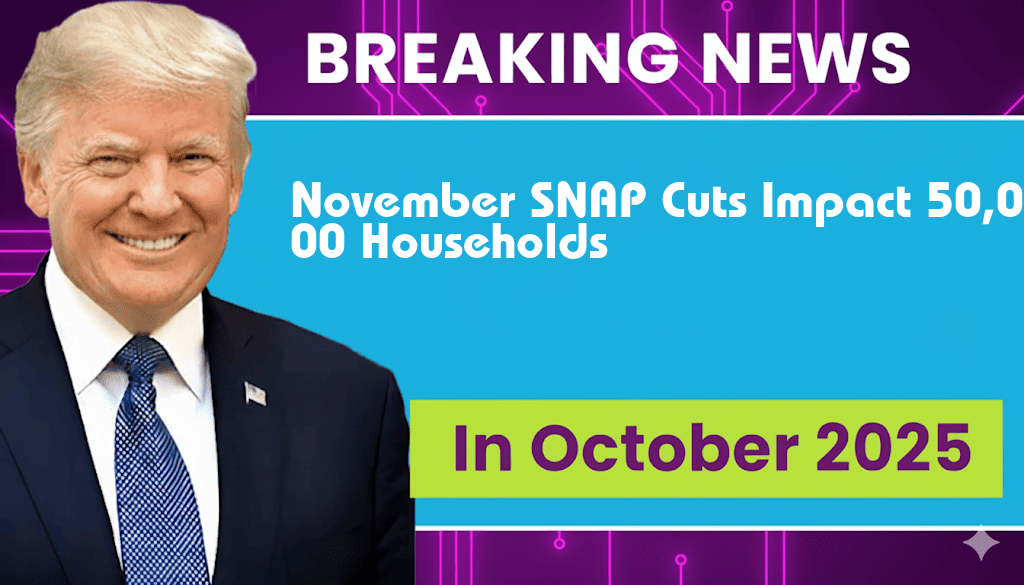November Sees $58 Monthly SNAP Reduction Affecting 50,000 Households
In November 2023, approximately 50,000 households across the United States will experience a significant reduction in their Supplemental Nutrition Assistance Program (SNAP) benefits, with an average decrease of $58 per month. This change comes as a result of the expiration of enhanced pandemic-era benefits that had been providing additional financial support to food-insecure families. As the nation grapples with persistent inflation and rising food prices, the timing of this reduction has raised concerns among social service advocates and affected families alike.
Background on SNAP Benefits
The Supplemental Nutrition Assistance Program, formerly known as food stamps, is a federal assistance program designed to help low-income individuals and families afford nutritious food. Typically, SNAP benefits are calculated based on household size, income, and living expenses. The program saw temporary increases in benefits during the COVID-19 pandemic, which aimed to alleviate food insecurity exacerbated by economic shutdowns.
Details of the Reduction
As of November, the additional benefits provided during the pandemic, known as the Emergency Allotment, will no longer be available. This has led to a standardized benefit level that may not adequately meet the nutritional needs of many households. According to the U.S. Department of Agriculture, the average SNAP benefit before the pandemic was about $121 per month per person. With the recent cuts, this average will drop significantly for those previously receiving enhanced benefits.
| Household Size | Average Monthly Benefits (Before) | Average Monthly Benefits (After) |
|---|---|---|
| 1 | $204 | $146 |
| 2 | $374 | $316 |
| 3 | $535 | $477 |
| 4 | $680 | $622 |
Impact on Households
The reduction in SNAP benefits has raised alarms among community organizations and food banks. Many families who relied on the extra funds to purchase groceries are now facing the challenge of stretching their budgets further as food prices continue to rise. The U.S. Bureau of Labor Statistics reported that food prices have increased by 11.3% over the past year, making the loss of SNAP benefits particularly challenging for low-income families.
- Increased Food Insecurity: Advocacy groups warn that this reduction could lead to a rise in food insecurity and hunger among vulnerable populations.
- Greater Demand for Food Assistance: Local food banks and pantries are already preparing for an increase in demand for emergency food assistance as families seek help to fill the gap left by reduced benefits.
- Emotional and Physical Health Risks: Access to nutritious food is directly linked to physical and mental health; families facing food insecurity may experience increased stress and health issues.
Government Response and Future Outlook
In response to the potential fallout from the SNAP benefit reduction, several state governments and non-profit organizations are ramping up efforts to provide additional support. Initiatives include food drives, meal programs, and educational workshops on budgeting and nutrition. However, experts emphasize that these short-term measures are not a substitute for adequate SNAP funding.
Looking forward, there are calls for policymakers to reconsider the structure and funding of SNAP, especially as economic pressures persist. Advocates suggest that permanent increases to SNAP benefits may be necessary to keep pace with the rising costs of living. For more information on SNAP and its impact on health and nutrition, visit Wikipedia or Forbes.
The November reductions in SNAP benefits highlight the ongoing challenges faced by low-income households in America, raising critical questions about food security and the adequacy of federal assistance programs in times of economic hardship.
Frequently Asked Questions
What is the reason for the $58 monthly SNAP reduction in November?
The $58 monthly SNAP reduction is due to adjustments made by the government in response to changing economic conditions and budget allocations for the Supplemental Nutrition Assistance Program.
How many households are affected by this SNAP reduction?
Approximately 50,000 households are impacted by the $58 monthly reduction in SNAP benefits this November.
When will the SNAP reduction take effect?
The SNAP reduction will take effect in November, affecting the monthly benefits distributed to eligible households.
What can affected households do to cope with the SNAP reduction?
Affected households may explore local food assistance programs, community resources, and budgeting strategies to help manage the impact of the SNAP benefit reduction.
Will the SNAP reduction be permanent?
The permanence of the SNAP reduction is uncertain and may depend on future government policy decisions and economic factors.

Leave a Reply